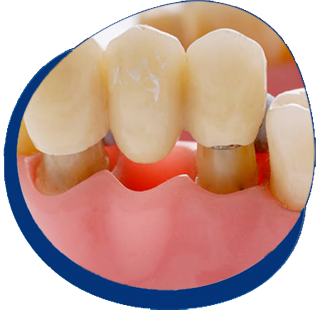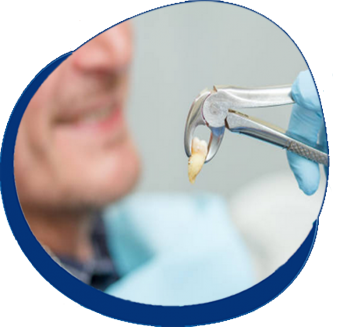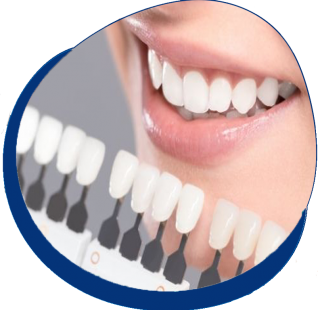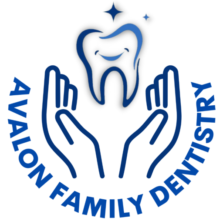Our Services

Dental Exams
A comprehensive General Dentistry exam will be performed by your dentist, Dr. Malik, at your initial dental visit. At regular check-up exams, your dentist and hygienist, Mr. Uddin will include the following:
- Examination of diagnostic x-rays (radiographs): essential for detection of decay, tumors, cysts, and bone loss. Bitewings, PA views and panoramic X-rays will help to determine tooth and root positions and all other deformities.
- Gum disease evaluation: checking the gums and bones around the teeth for any signs of periodontal disease (like gingivitis and periodontitis, for example).
- Examination of tooth decay: all tooth surfaces will be checked for decay. Any existing restorations such as fillings, crowns, etc. will be examined.
Read more
Professional Dental Cleaning
Professional dental cleanings (dental prophylaxis) are usually performed by Registered Dental Hygienists. Your cleaning appointment will include a dental exam and the following:
- Removal of calculus (tartar): Calculus is hardened plaque that has been left on the tooth for some time and is now firmly attached to the tooth surface. Calculus forms above the gum margin usually white or yellow white in color but may be stained darker. Calculus also forms below the gum line, may be stained dark green to greenish black. It is superficially covered with bacterial plaque biofilm and can only be removed with special dental instruments.
- Removal of plaque: Plaque is a sticky, almost invisible film that forms on the teeth. It is a growing colony of living bacteria, food debris, and saliva. The bacteria produce toxins (poisons) that inflame the gums. This inflammation is the start of periodontal disease! In addition, this bacteria digests sugars in our diet, producing acids that cause tooth decay (cavities).
- Polishing of teeth: Removal of stains (discolorations that accumulate on the external surface of the tooth) and plaque that is not otherwise removed during tooth brushing and scaling.
- Self-care or home care education: Traditionally, self-care recommendations have consisted of brushing and flossing. Toothbrushes, either manual or powered, continue to be the product of choice for cleaning the facial, lingual and occlusal surfaces of the teeth. Tooth brushing does not reach the proximal surfaces of teeth or the area immediately under the contact point of adjacent teeth. Dental floss is designed to clean the proximal surfaces of the teeth. This essential home care technique is demonstrated to all patients to ensure optimal oral health.
Read more


Dental Implants
Many times, people think, will they be able to ace a Medically Fit life after getting their Dental Implants done?
The Answer is Absolutely yes! As you would take care of your normal teeth so you need to do for your Dental Implants as well.
Brushing timely and taking Dental Implants as a part of your teeth Family, will make your life easy. Implants are used for replacing lost teeth – about 70% of our population has at least one functional tooth missing. Implants are one (and sometimes the only) option for replacing teeth. Other options are bridges and removable dentures.
Dental Implants are not very new procedure and hence doubting its longevity and satisfaction is not an option. So, you can definitely count on Dental Implants, for replacement of your lost tooth or to ace the bone diversion.
To install an implant, first a metal or ceramic screw is placed into the jaw bone. A hole is drilled into the bone and a corresponding sized screw is placed into the hole. Most of the time, the screw is allowed to heal for a couple months and then the abutment is attached to it. Finally, the crown is attached to the abutment. Most of the screws are made of titanium. Titanium is a very biocompatible metal that the body can tolerate and integrate. After the screw is healed and integrated into the jaw bone, the abutment is fabricated. Its job is to connect the crown (tooth itself) to the screw (root).
Read more
Bridges
A dental bridge is a fixed (non-removable) appliance which is used to fill the space where a tooth was removed or had fallen out. It is a false tooth that is held in place by being attached to the teeth next to it, like a bridge. The bridge preserves the integrity of your existing teeth by preventing the shifting of teeth and other jaw issues.
There are several types of bridges. You and Dr. Malik will discuss the best options for your particular case. Porcelain fixed bridges are the most popular because they resemble your natural teeth. This type of bridge consists up to two crowns that go over two anchoring teeth (abutment teeth) and are attached to pontics (artificial teeth). This fills the gap created by the one or more missing teeth.
Dental bridges are highly durable and will last many years, however they may need to be replaced or re-cemented due to normal wear.
Reasons for a fixed bridge:
- Fill space of missing teeth
- Maintain facial shape
- Prevent remaining teeth from drifting out of position
- Restore chewing and speaking ability
- Restore your smile
- Upgrade from a removable partial denture to a permanent dental appliance.
What does getting a fixed bridge involve?
A bridge usually requires two or more visits. While the teeth are numb, the two anchoring teeth are prepared by removing a portion of enamel to allow for a crown. Next, an accurate impression (mold) is made which will be sent to a dental laboratory where the bridge will be fabricated. In addition, a temporary bridge will be made and worn for several weeks until your next appointment. At the second visit, your permanent bridge will be carefully checked, adjusted, and cemented to achieve a proper fit. You will receive care instructions at the conclusion of your treatment. Proper brushing, flossing and regular dental visits will aid in the life of your new permanent bridge.
Dentures and removable partial denture
A denture is a piece of plastic seating on the gum and replaces the missing teeth. There are two main types of dentures:
- Complete dentures when no natural teeth are left on either the top, bottom or both arches. They have the complete set of “teeth” which replace all the missing teeth on an arch. Complete dentures sit on the gums and are retained there by suction only, unless implants are used.
- Partial dentures when some of the teeth are left in the patient’s mouth and the partial dentures replace the missing teeth. They are retained by suction and by anchorage to the existing teeth. Partial dentures can be made of a metal frame and acrylic, pure acrylic or a specific material called Valplast (Flex).
Read more


Extraction
An extraction is the process of removing a single or multiple damaged or infected teeth. Extractions become necessary in cases of when a tooth has become decayed and is beyond repair, when there is advanced bone loss, or even as a preparatory measure for an elaborate orthodontic procedure. Extraction is necessary to prevent the infection from spreading to other teeth and causing additional damage.
The extraction is carried out either through a surgical procedure or done in a simple manner using tooth holder, forceps and local anesthesia. The choice of methods depends on your dental health and severity of problem. Sometimes it might also become necessary to break a tooth into several fragments to make the process of extraction easier and less painful. Once a tooth has been extracted, the gap can be easily refilled by an implant.
Orthodontic treatment
With time and changed lifestyle, people are more concerned about their health. No doubt, this is a great way to celebrate life!
With the orthodontic treatment, we solve your problem of malposition teeth, jaws and gums.
With the help of orthodontic treatment, the corrected jaws, teeth and gums help in giving better smile and ultimately lifted up confidence!
Few helpful traits that an orthodontic treatment helps correcting are”
- Teeth spacing
- Biting problems
- Smile Awkwardness
If you have been dealing with all or some of the problems, since a long time, there is good news. You can break free with the help of our stress free and hygienic orthodontic treatment.
Wisdom Tooth Extractions
Third molars, commonly referred to as wisdom teeth, are usually the last four of 32 teeth to erupt in the mouth, generally making their appearance between the ages of 17 to 25. They are located at the back of the mouth (top and bottom), near the entrance to the throat. The term “wisdom” stems from the idea that the molars surface at a time typically associated with increased maturity or “wisdom”. In most cases, inadequate space in the mouth does not allow the wisdom teeth to erupt properly and become fully functional. When this happens, the tooth can become impacted (stuck) in an undesirable or potentially harmful position. If left untreated, impacted wisdom teeth can contribute to infection, damage to other teeth, and possibly cysts or tumors.
There are several types, or degrees, of impaction based on the actual depth of the teeth within the jaw:
- Soft Tissue Impaction: The upper portion of the tooth (the crown) has penetrated through the bone, but the gingiva (gum) is covering part or all of the tooth’s crown and has not positioned properly around the tooth. Because it is difficult to keep the area clean, food can become trapped below the gum and cause an infection and/or tooth decay, resulting in pain and swelling.
- Partial Bony Impaction: The tooth has partially erupted, but a portion of the crown remains submerged below the gum and surrounding jawbone. Again, because it is difficult to keep the area clean, infection will commonly occur.
- Complete Bony Impaction: The tooth is completely encased by jawbone. This will require more complex removal techniques.
Reasons to remove wisdom teeth
While not all wisdom teeth require removal, wisdom teeth extractions are most often performed because of an active problem such as pain, swelling, decay or infection, or as a preventative measure to avoid serious problems in the future. If impaction of one or more wisdom teeth is present, and left untreated, a number of potentially harmful outcomes can occur, including:
- Damage to nearby teeth: Second molars (the teeth directly in front of the wisdom teeth) can be adversely affected by impacted wisdom teeth, resulting in tooth decay (cavities), periodontal disease (gum disease) and possible bone loss.
- Disease: Although uncommon, cysts and tumors can occur in the areas surrounding impacted wisdom teeth.
- Infection: Bacteria and food can become trapped under the gum tissue, resulting in an infection. The infection can cause considerable pain and danger.
- Tooth Crowding: It has been theorized that impacted wisdom teeth can put pressure on other teeth and cause them to become misaligned (crowded or twisted). This theory isn’t universally accepted by all dental professionals, and it has never been validated by any scientific studies.
Wisdom Teeth Examination
As with any dental procedure, Dr. Malik will want to initially conduct a thorough examination of the wisdom and surrounding teeth. Panoramic or digital x-rays will be taken in order for Dr. Malik to evaluate the position of the wisdom teeth and determine if a current problem exists, or the likelihood of any potential future problems. The x-rays can also clarify additional risk factors, such as deterioration or decay of nearby teeth. Early evaluation and treatment (typically in the mid-teen years) is recommended in order to identify potential problems and to improve the results for patients requiring wisdom teeth extractions. Only after a thorough examination can Dr. Malik provide you with the best options for your particular case.
What does the removal of wisdom teeth involve?
Wisdom teeth removal is a common procedure, generally performed under local anesthesia. The surgery does not require an overnight stay, and you will be released with post-operative instructions and medication (if necessary), to help manage any swelling or discomfort.
Read more
Root Canal Therapy
Root canal therapy is needed when the nerve of a tooth is affected by decay or infection. In order to save the tooth, the pulp (the living tissue inside the tooth), nerves, bacteria, and any decay are removed and the resulting space is filled with special, medicated, dental materials, which restore the tooth to its full function.
Having a root canal done on a tooth is the treatment of choice to save a tooth that otherwise would have to be removed. Many patients believe that removing a tooth that has problems is the solution, but what is not realized is that extracting (pulling) a tooth will ultimately be more costly and cause significant problems for adjacent teeth.
Root canal treatment is highly successful and usually lasts a lifetime, although on occasion, a tooth will have to be retreated due to new infections.
Signs and symptoms for doing root canal therapy:
- An abscess (or pimple) on the gums
- Lingering sensitivity to hot and cold
- Severe tooth pain.
- Sometimes no symptoms are present
- Swelling and/or tenderness
Reasons for root canal therapy:
- Decay has reached the tooth pulp (the living tissue inside the tooth)
- Infection or abscess have developed inside the tooth or at the root tip
- Injury or trauma to the tooth
What does root canal therapy involve?
A root canal procedure requires one or more appointments and can be performed by a dentist or an endodontist (a root canal specialist). While the tooth is numb, a rubber dam (a sheet of rubber) will be placed around the tooth to keep it dry and free of saliva. An access opening is made on top of the tooth and a series of root canal files are placed into the opening, one at a time, removing the pulp, nerve tissue, and bacteria. If tooth decay is present, it will also be removed with special dental instruments. Once the tooth is thoroughly cleaned and disinfected, it will be sealed with either a permanent filling or, if additional appointments are needed, a temporary filling will be placed.
At the next appointment, usually a week later, the roots and the inside cavity of the tooth will be filled and sealed with special dental materials. A filling will be placed to cover the opening on top of the tooth. In addition, all teeth that have root canal treatment should have a crown (cap) placed. This will protect the tooth and prevent it from breaking while restoring it to its full function.
After treatment, your tooth may still be sensitive, but this will subside as the inflammation diminishes and the tooth has healed. You will be given care instructions after each appointment. Good oral hygiene practices and regular dental visits will aid in the life of your root canal treatment.
Crowns When a tooth becomes heavily decayed, damaged or cracked, a filling will no longer suffice to restore the tooth. To save it from further damage and prolong its life, a crown (cap) is fitted over it as a permanent cover. Crowns are made of a variety of materials such as porcelain, gold, acrylic or a mixture of the prior. Although there are several types of crowns, porcelain (tooth colored crowns) are the most popular, because they resemble your natural teeth. They are highly durable and will last many years, but like most dental restorations, they may eventually need to be replaced. Porcelain crowns are made to match the shape, size, and color or your teeth giving you a natural, long-lasting beautiful smile. Upon initial examination, Dr. Malik will determine the material best suited for your crown.
Reasons for getting crowns include:
- Broken or fractured teeth
- Cosmetic enhancement
- Decayed teeth
- Fractured fillings
- Large fillings
- Root canal- treated teeth
What does getting a crown involve?
A crown procedure usually requires two appointments. Your first appointment will include preparing the tooth and taking several highly accurate molds (or impressions) that will be used to create your custom crown. A mold will also be used to create a temporary crown which will stay on your tooth for approximately two weeks until your new crown is fabricated by a dental laboratory.
While the tooth is numb, Dr. Malik will prepare the tooth by removing any decay and shaping the surface to properly fit the crown. Once these details are accomplished, your temporary crown will be placed with temporary cement and your bite will be checked to ensure you are biting properly.
At your second appointment your temporary crown will be removed, the tooth will be cleaned, and your new crown will be carefully placed to ensure the spacing and bite are accurate. You will be given care instructions and encouraged to have regular dental visits to check your new crown.
Read more


Porcelain Veneers
Veneers are very thin pieces of durable, tooth shaped porcelain that are custom made (for shape and color) by a professional dental laboratory. They are bonded onto the front of teeth to create a beautiful and attractive smile.
Veneers can completely reshape your teeth and smile. They can often be alternatives to crowns and the ideal solution in treating many dental conditions.
As with most dental restorations, veneers are not permanent and may someday need replacement. They are very durable and will last many years, giving you a beautiful long lasting smile.
Reasons for porcelain veneers:
- Cosmetically, to create a uniform, white, beautiful smile
- Crooked teeth
- Misshapen teeth
- Severely discolored or stained teeth
- Teeth that are too small or large
-Unwanted or uneven spaces
-Worn or chipped teeth
What does getting porcelain veneers involve?
Veneers usually require two visits to complete the process, with little or no anesthesia required during the procedure. The teeth are prepared by lightly preparing and shaping the surface to allow for the thickness of the veneer. A mold or impression of the teeth is taken and a shade (color) will then be chosen by you and Dr.Malik.
On the second visit, the teeth will be cleansed with special liquids to achieve a durable bond. Bonding cement is then placed between the tooth and veneer and a special light beam is used to harden and set the bond. You will receive care instructions for veneers. Proper brushing, flossing and regular dental visits will aid in the life of your new veneers.
Teeth whitening
Teeth play a major role in enhancing your beauty. White teeth make your smile bright and lift up your confidence. We like white teeth. When teeth are white they show that they are clean and healthy. But teeth can get stained from coffee, red wine, soda, tea, colored foods, etc.
The stains from foods and drinks deposit on the teeth and create a layer which prevents the teeth to show their original color. Those stains are made up from big molecules which absorb the light, this is why they look dark.
No doubt, with our daily routine, where we consume red wine spices, cold drinks, coffee and tea our Teeth Whitening is affected and the shine is slowly decayed.
Teeth Whitening is the procedure that helps in removing paleness from the teeth helping them to shine brightly!
The deposition or the plaque over teeth is treated with the help of a Teeth Whitening gel and then broken down into smaller composites. This then becomes easy to get rid of those smaller composites, leaving behind white shining teeth with this absolutely painless procedure of Teeth Whitening.
What the whitening gel does is break down the large, light absorbing staining molecules into smaller molecules which can be penetrated easier by the light. This way, the teeth look lighter and brighter.
Read more



